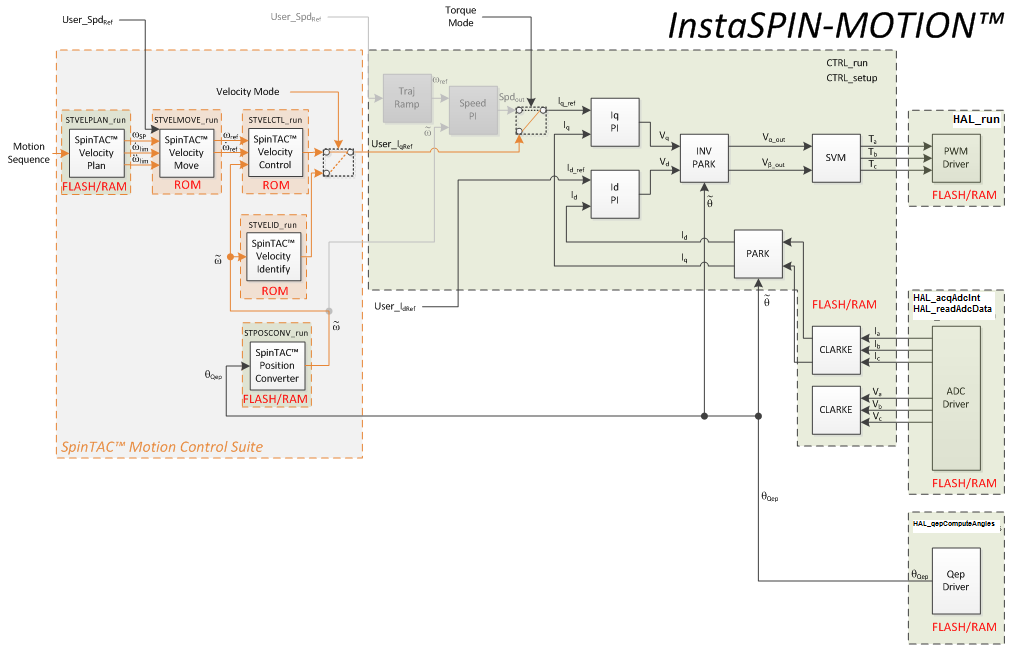SPRUHW1A June 2014 – October 2021 TMS320F28052-Q1 , TMS320F28052M , TMS320F28052M-Q1 , TMS320F28054-Q1 , TMS320F28054M , TMS320F28054M-Q1
- 1Read This First
- 1 F2805xM InstaSPIN-MOTION Enabled MCUs
- 2InstaSPIN-MOTION Key Capabilities and Benefits
- 3InstaSPIN-MOTION Block Diagrams
- 4Application Examples
- 5Evaluating InstaSPIN-MOTION Performance
- 6Microcontroller Resources
Scenario 2: InstaSPIN-MOTION Speed Control with a Mechanical Sensor
While sensorless solutions are appealing and cost effective for many applications, there are some applications that require the rigor and accuracy of a mechanical sensor. For these applications (see Figure 4-3), the quadrature encoder provides position information, which is then converted to speed feedback via the SpinTAC Position Convert. SpinTAC Velocity Control receives the speed feedback and generates the torque reference signal via IqRef. The SpinTAC Motion Control Suite provides the motion sequence state machine, generates the reference trajectory, and controls the system speed.
 Figure 3-3 InstaSPIN-MOTION Speed Control with a Mechanical Sensor
Figure 3-3 InstaSPIN-MOTION Speed Control with a Mechanical Sensor